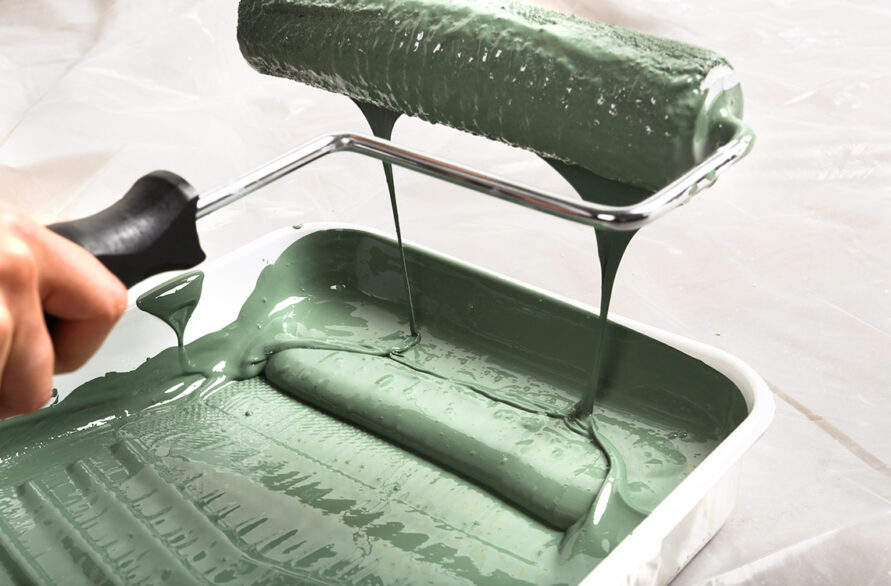Have you ever found yourself buying your roller covers based purely on the price, and not really giving it much thought to the size? Or even stood in the paint roller aisle in the home improvement store and wondered what the heck the difference between roller covers was? Some are thick, some are thin, and there are at least 4 different sizes to choose from… it can get confusing. We’re here to help you navigate the world of paint rollers and pick the one that’s right for your DIY paint project!
First off, you need to think about the quality of the roller. The best quality rollers on the market are made of microfiber. Microfiber rollers are like traditional woven paint rollers, but feature a wrap of microfiber cloth. In the simplest terms, a microfiber is exactly what it sounds like—a synthetic fabric composed of very small fibers. Microfibers are very good at absorbing liquids, especially oil-based liquids, and are so soft they cannot scratch paintwork unless they are contaminated with grit or hard particles of debris. On a microfiber roll, the microfibers have adhered to the roller with heat, which makes microfiber rollers very durable. And because these fibers are so tiny, they release a smaller amount of coating on the wall, reducing the change of unsightly flaws in the paintwork. They’re great for creating a spray-like finish on ultra-smooth surfaces like cabinets, doors, and more. They have very useful indication lines running around the roller, so you are aware of when there is enough paint on the roller and don’t over-do it.
The surface you’re painting will determine the “nap” (the thickness of the woven cover) you will need. Each roller has a different thickness or “nap”, specifically designed for different painting surfaces around the home. It’s actually quite simple, the thicker the nap, the more paint a roller will hold. Therefore, the thicker the nap, the rougher the surface the roller is designed for, and vice versa. For a smoother finish, you want to lower the nap of the roller. The thinner the roller nap, the thinner each coat will be.

20mm
20mm nap rollers are usually for rough and textured surfaces, as they are designed to hold large volumes of paint. Rough surfaces, such as brick, are very porous and paint-consuming. The thick roller helps to load the paint on these surfaces, not only to put on more paint but also to get into all the cracks that these rough surfaces have.
12mm
Your do-it-all, one-stop-shop roller size. 12mm is the most commonly used roller for painting most walls and ceilings around the home. They are designed to hold a decent amount of paint, leaving you with a great finish without splattering paint all over you and the floor. Score!
9mm
We’re getting into the more refined rollers here. 9mm rollers are designed for painting feature walls or walls where you want to get a really, really smooth finish.
5mm
5mm is an ultra-thin roller cover, which also helps in getting that ultra-smooth finish. 5mm rollers are used mainly for painting furniture such as doors or cupboards.
TOP TIPS
Now that you have the right paint roller nap, here are a few other things to keep in mind when using your new paint roller:
- To attach the roller cover to the paint roller frame, simply align the hole in the cover with the end of the frame and firmly push it on.
- If needed, you can screw on a painting roller extension pole to each roller frame to reach high places. This will also save your back some hardship!
- Use the rounded end of the foam roller cover to smooth things out when you don’t want any roller edge lines to show up in your finish.
- Don’t use excessive pressure to apply paint—an even, light pressure is all that is needed.
- Remove your roller cover from the roller frame right after you are finished painting.
- To clean, hold the roller cover under running water and squeeze your hand over the roller to remove the paint. Repeat until all the paint is out of the roller, then let dry. Never leave the cover soaking in water.

